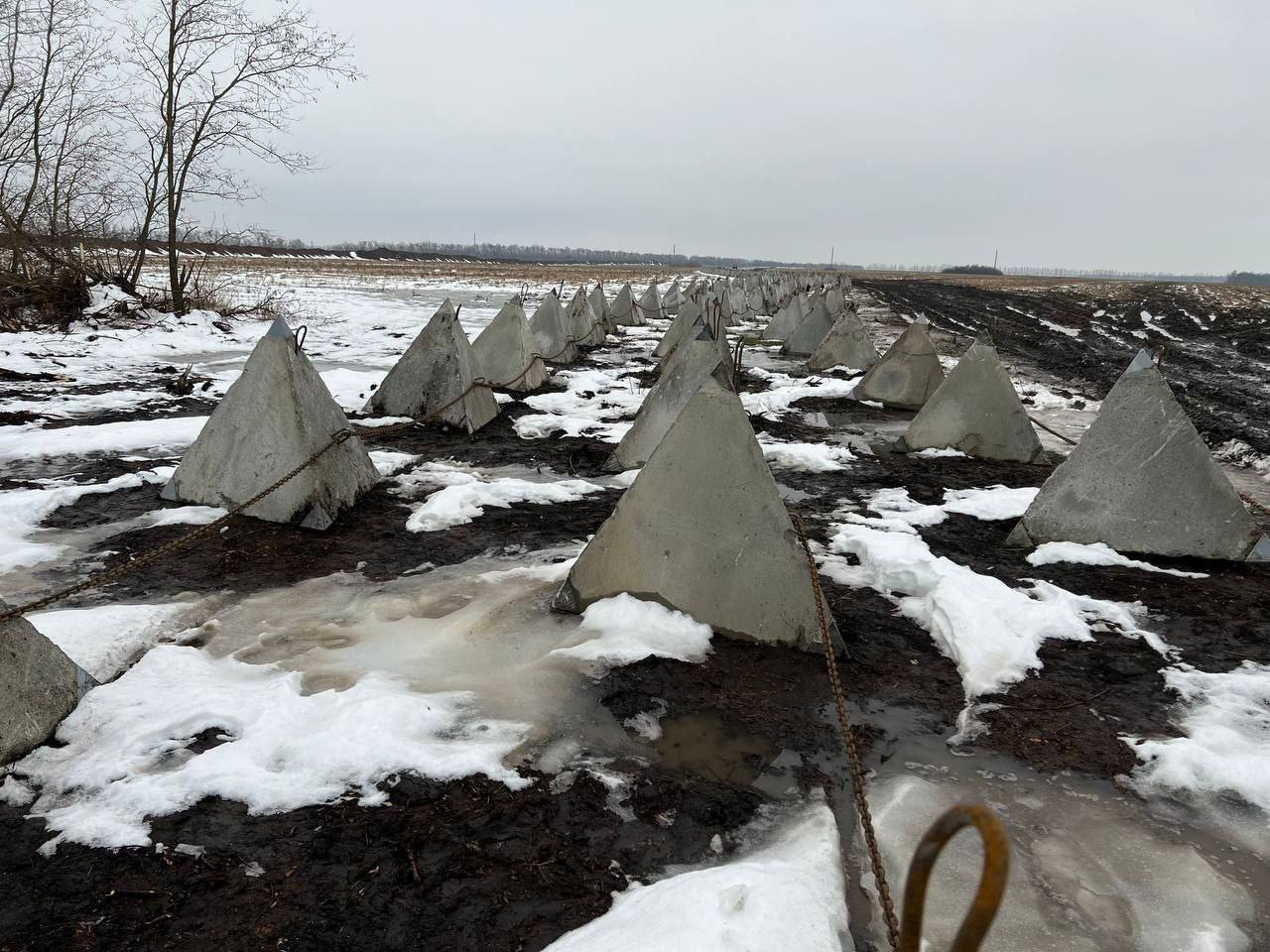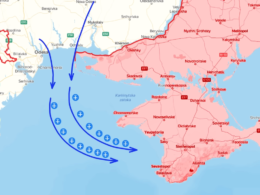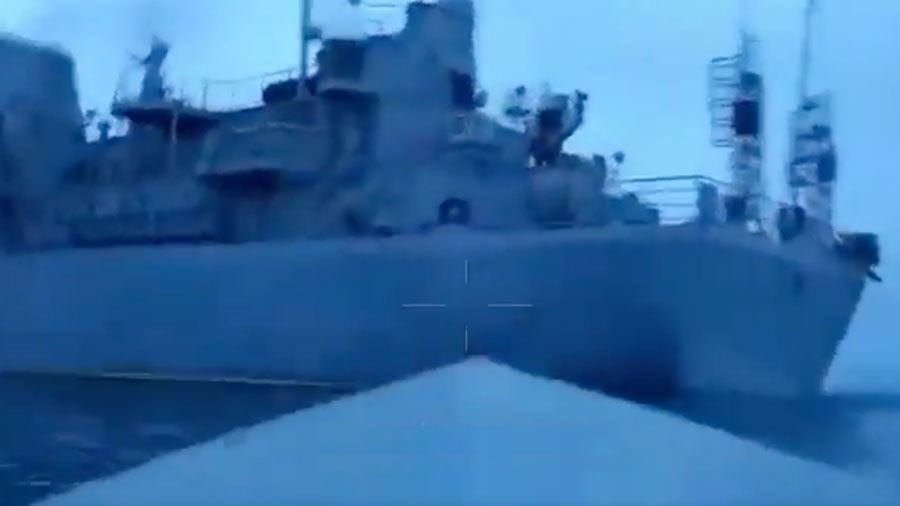Russia is creating a full-fledged fortified area in southern Ukraine, all the way down to Crimea, the Institute for the Study of War (ISW) reports. This indicates that Russia is taking the threat of Ukraine recapturing the occupied peninsula seriously.
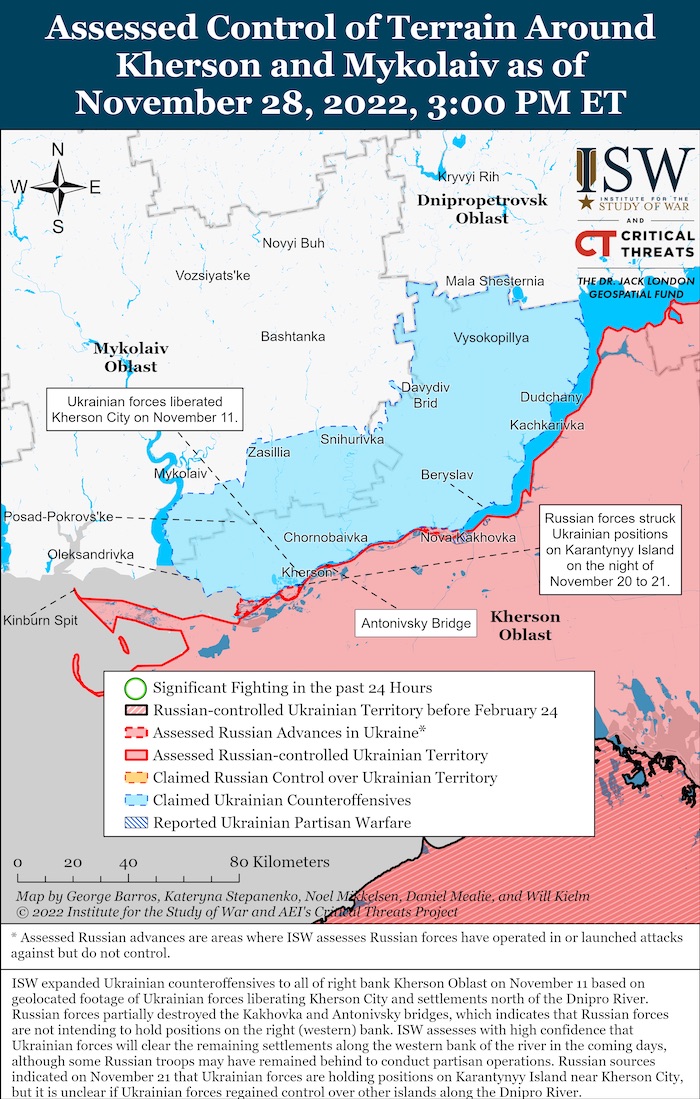
The Russian military leadership takes measures to repel a Ukrainian counteroffensive in case Ukraine's Armed Forces manage to cross the Dnipro River. A probable Ukrainian advance on the eastern bank of the Dnipro River in Kherson Oblast would threaten Russian critical ground lines of communications (GLOCs) all the way down to Russian-occupied Crimea, ISW reports.
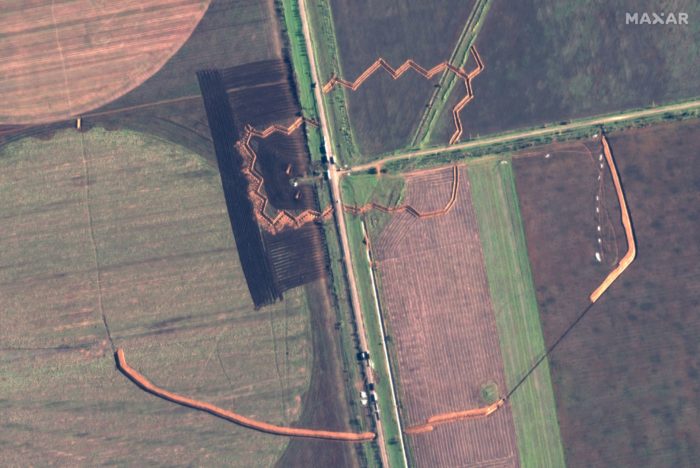
The Russian army is turning southern Kherson Oblast into an echeloned fortified area.
Moreover, there is also a video on social media showing Russian troops digging up trenches and erecting dragon's teeth anti-tank defensive lines on the border with occupied Crimea, which Russia considers to be an inalienable part of its own territory following the illegal annexation of Crimea in 2014. The video allegedly shows how one of Russia's largest companies Avtoban is digging trenches and setting up anti-tank traps on the border between occupied Crimea and Kherson Oblast. This started on 3 November, a relative of one of the construction workers told Sirena.
Reportedly, one of Russia's largest construction companies Avtoban is digging trenches and setting up "Dragon Teeth" anti-tank traps just on Crimea's northern border 2/2
📽️https://t.co/1XK1jurYTN pic.twitter.com/lWA8eF7Ivi— Euromaidan Press (@EuromaidanPress) November 29, 2022
However, whether this defense will be indeed effective against a Ukrainian offensive is an open question.
One video showing a Ukrainian infantry fighting vehicle driving straight over the Russian dragon's teeth somewhere in Luhansk Oblast, eastern Ukraine, popped up on the web earlier this month, suggesting the fortifications are not that strong of an obstacle.
Furthermore, the latest US military package to Ukraine includes special vehicles M58 MICLIC (Mine Clearing Line Charge) designed to destroy enemy defense lines, such as minefields and dragon's teeth anti-tank obstacles, according to Defense Express. There is a short video of M58 MICLIC at work recorded by the US Armed Forces. It shows how effective such a vehicle might be in overcoming echeloned defense lines, such as those that the Russian forces are currently erecting in southern Ukraine.
However, dragon's teeth will still likely slow down Ukraine's advance, as they have shown to halt the movement of tanks:
https://twitter.com/ironicdude1/status/1593328760786386945
It must be noted that Russian troops have been digging trench lines on the eastern bank of the Dnipro River in the occupied part of Kherson Oblast since early October 2022, according to ISW. By building up a fortified area, Russian forces may set conditions for a protracted defense in case the Ukrainian attempt to cross the Dnipro River and establish solid lodgement on the eastern bank of the river is successful.
Russia is creating a tiered defense in Kherson Oblast and fortifying Mariupol
While the eastern bank of the Dnipro River is still under Russian control, Russian GLOCs have become increasingly vulnerable to Ukrainian high-precision strikes from the recently deoccupied western bank of Kherson Oblast.
Satellite imagery shows that Russian military leadership has prioritized digging trenches and erecting so-called dragon’s teeth anti-tank defensive lines along key GLOCs that connect Russian forces on the eastern (left) bank of the Dnipro River with southeastern rear areas in Kherson Oblast and occupied Crimea, as well as with eastern rear areas around occupied Melitopol, Zaporizhzhia Oblast, southeastern Ukraine. Most of these field fortifications are located directly on the GLOCs and are primarily oriented perpendicular to the roads themselves, according to ISW.
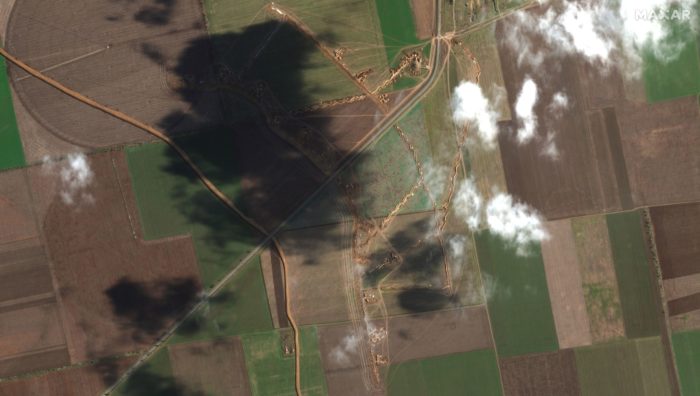
The Russian defense lines in southern Ukraine indicate that the Russian military leadership takes the threat of a Ukrainian counteroffensive across the Dnipro River seriously. Most of the Russian fortifications in the occupied part of Kherson Oblast aim at defending against a Ukrainian advance along the roads, which makes such defense lines increasingly vulnerable to envelopments across the open countryside, according to ISW.
Ukrainian forces have previously conducted long cross-country drives in Kharkiv Oblast, breaking through Russian defensive lines near Balakliia (Kharkiv Oblast, eastern Ukraine) last September.
Therefore, the Ukrainian army has successful experience when it comes to rapid advance and encirclement of Russian strongpoints, such as Kupiansk and Izium (both located in Kharkiv Oblast, eastern Ukraine), where a Ukrainian counteroffensive managed to push Russian forces from the Siverskyi Donets River to the Russian-Ukrainian border in most of Kharkiv Oblast.
Kharkiv Oblast returns to life in Ukraine after six months of Russian occupation
The tactical vulnerability of Russian defensive positions in Kherson Oblast may be exploited by Ukrainian forces during the possible counteroffensive operation on the eastern bank of the Dnipro River. Russian forces would be under threat of attacks on their uncovered flanks or even complete encirclement if Ukrainian forces were able to cross the Dnipro River both in the Kherson City (currently under Ukrainian control) and Nova Kakhovka area (currently under Russian control) to the north of most Russian fortifications and to initiate a substantial mechanized campaign from a base on or near the Kinburn Spit to the west of most fortifications, according to ISW.
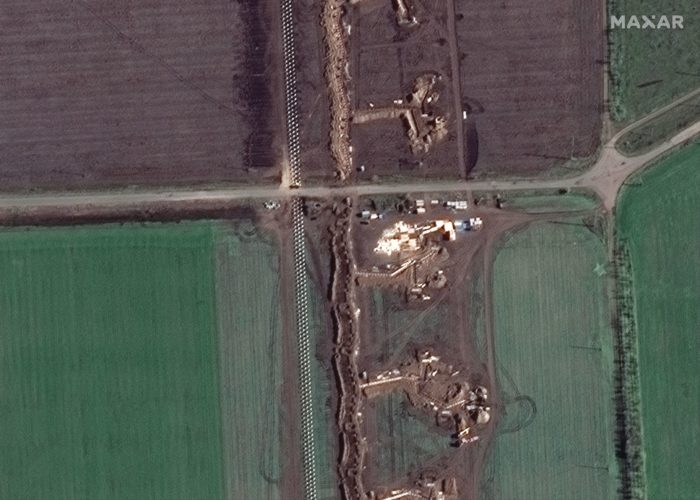
Russian forces would presumably attempt to slow down the Ukrainian counteroffensive on the eastern bank of the Dnipro River in Kherson Oblast until they can deploy more reinforcements to either halt Ukrainian forces from breaking through secondary and tertiary defense lines that protect critical GLOCs both to Crimea and to the western chunk of occupied Zaporizhzhia Oblast, southeastern Ukraine.
If Russian forces expect the Ukrainian army to spend months breaking through the newly established defenses in this region, they could reasonably expect additional Russian mobilized forces or partially-trained conscripts to arrive in time to stop and possibly reverse the Ukrainian counteroffensive, according to ISW.
At this point, Ukrainian forces have not yet crossed the Dnipro River and are being deployed on the western bank of the river in Kherson oblast. However, the counteroffensive operation of Ukrainian forces around the Kinburn Spit in Mykolayiv Oblast (see the map above) may end up with Ukraine establishing a bridgehead on the eastern bank of the Dnipro River soon. A silent military operation of Ukrainian forces on the Kinburn split is currently underway, according to Ukraine's Operational Command South spox Natalia Humeniuk.
In case Ukrainian forces manage to deoccupy the Kinburn Spit, Russian flanks and GLOCs on the eastern bank of the Dnipro River in Kherson Oblast will become more vulnerable.
Currently, the Russian military leadership has likely deployed mobilized personnel to the primary lines of defense in Kherson Oblast and pulled out experienced professional units to the secondary and tertiary defensive lines, according to ISW. Such a deployment pattern may as well lead to more rapid advances of Ukrainian forces in this region.
The Russian attempts to build up defensive lines on the eastern bank of the Kherson region show the critical importance that this area has for the future course of the Russo-Ukrainian war, especially when it comes to the Southern front.
The GLOCs that Russian forces seek to defend in Kherson Oblast include almost all remaining routes essential to maintaining military operations across southern Ukraine, according to ISW. These GLOCs include the two main highways connecting mainland southern Ukraine to annexed Crimea, which has been under Russian control since 2014.
The implications of possible Russian withdrawal from Kherson Oblast may make it hard for Russia to control the neighboring Zaporizhzhia Oblast (southeastern Ukraine), more than half of which is currently occupied by the Russian forces. There are indications that Russia has already begun to set long-term information conditions for a possible withdrawal of Russian troops from the Zaporizhzhia region, according to ISW. This is the region where Zaporizhzhia nuclear power plant, Ukraine's and Europe's biggest, is located. Currently, the plant is under Russian control. Considering that the Zaporizhzhia nuclear plant used to generate 20% of Ukraine's electricity, getting this plant back under Ukrainian control is crucial for Ukraine.
All in all, the success of Ukrainian counteroffensive on the eastern bank of the Dnipro River, in Kherson Oblast, may determine the course of the Russo-Ukrainian war in general, making the Russian defeat in Ukraine absolutely inevitable.
Related:
- Wagner PMC now builds anti-tank fortifications in Russia’s Belgorod Oblast
- Russia is creating a tiered defense in Kherson Oblast and fortifying Mariupol - Euromaidan Press
- Kherson defeat could end Putin’s Victory cult as Crimean War defeat did Russia’s 19th-century one, Klishin Says - Euromaidan Press
- Kherson residents share joy of being freed from Russian occupation (euromaidanpress.com)
- The unsung heroes of the battle of Kherson in Buzkovy Park (euromaidanpress.com)
- Russia denies planning to abandon Ukraine's Zaporizhzhia nuclear plant - Reuters - Euromaidan Press
- What's the worst that can happen at Zaporizhzhia nuclear power plant? Four scenarios - Euromaidan Press

